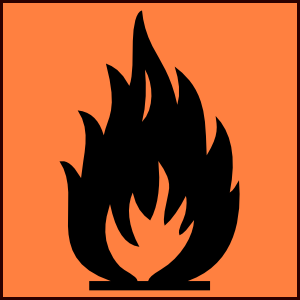Question 1 (15 points)
Match the symbols with the name
| iron | |
| silicon | |
| lead | |
| copper | |
| zinc | |
| sulfur | |
| potassium | |
| sodium | |
| silver | |
| gold | |
| phosphorus | |
| barium | |
| bromine | |
| iodine | |
| chlorine |
Question 1 (15 points)
Match the symbols with the name
| iron | |
| silicon | |
| lead | |
| copper | |
| zinc | |
| sulfur | |
| potassium | |
| sodium | |
| silver | |
| gold | |
| phosphorus | |
| barium | |
| bromine | |
| iodine | |
| chlorine |

A Metal is treated with dil H2SO4 acid. The gas evolved is collected by the method shown in the figure. Answer the following
(1) Name the gas
(2) Name the method of collection
(3) Is the gas soluble or insoluble in water
(4) Is the gas lighter or heavier than air 2m
2. 2. Dry HCl gas does not turn blue litmus red where as hydrochloric acid does.Give one reason? 1m
3. Identify substance oxidised and reduced in the following reaction
![]() MnO2 + 4 HCl MnCl2 + Cl2 + 2H2O 1m
MnO2 + 4 HCl MnCl2 + Cl2 + 2H2O 1m
4. A student dropped few pieces of marble in dilute hydrochloric acid contained in a test tube. The evolved gas was passed through lime water. What change would be observed in lime water? Write balanced chemical equation for both the changes occurred 3m
2. 5. Answer the following
(1) why is plaster of paris written as CaSO4. ½ H2O ? How is it possible to have half a water molecule attached to CaSO4
(2) Why is NaHCO3 an essential ingredient in antacids?
(3) When electricity is passed through an aqueous solution of sodium chloride three products are obtained. Why is the process called chlor alkali method ? 3m
6. Give reason
(a) During summer season milkman adds a very small amount of baking soda to fresh milk
(b) Potato chips manufacturers fill the packet of chips with nitrogen gas
(c) Tap water conduct electricity whereas distilled water does not.
(d) Water be never added to conc H2SO4
(e) Why copper vessels should not be used for keeping curd 5m.
7 . What will happen if a spoon of iron is used to stirring copper sulphate solution. 1m
8. What is amphoteric oxide ? give one example? Also write chemical equation. 2m
9. Why Plaster of Paris should be stored in moisture proof container? 1m
10. Write any 2 uses of the following
(1) NaHCO3 (2) CaOCl2 (3) NaOH (4) Plaster of paris


![[poisonous.gif]](https://blogger.googleusercontent.com/img/b/R29vZ2xl/AVvXsEgI7tQiPl-0gPosHe-9KRejC1qmwpJqvAcvajhyphenhyphenDydrxtQVr_hIvKEz5lR-eUtDvSkyFZWrVTmRjnxZLhR-L5yh6Ma4g-cKWNmYJDOZmW0nIGxugEGfvH28F1MgPH0pzMTKZCje23dUwOA/s1600/poisonous.gif)
![[oxidising.gif]](https://blogger.googleusercontent.com/img/b/R29vZ2xl/AVvXsEibihLstWnEQQAD991TzhP629KnTfIBky22TmqCx1TucYN6iav1UhPgZxVlXn9R061Oq07qP3T0TuXT3B8OqAetT4RX6jFLIWxs9jm6Mp3VtctxKTGGvEM_dsEbHBHffmg6mUB8aS7jErA/s1600/oxidising.gif)






